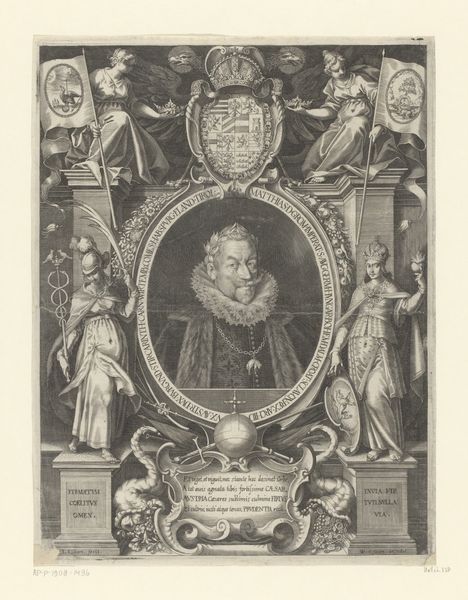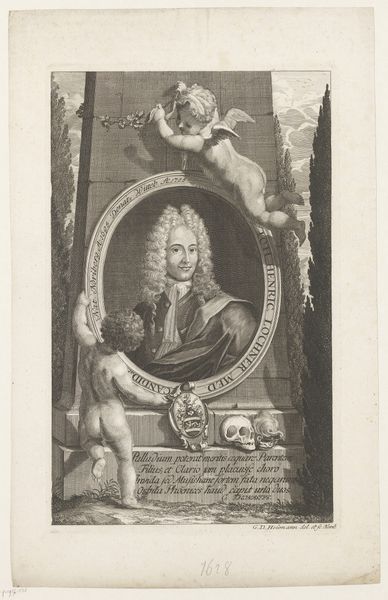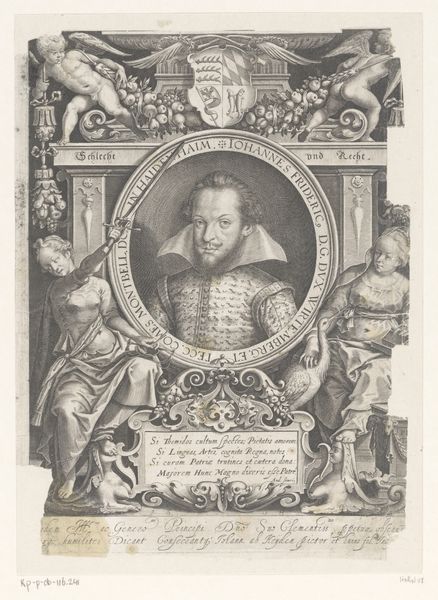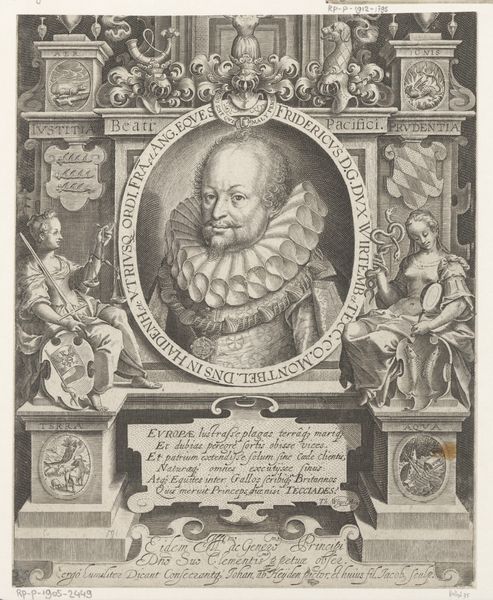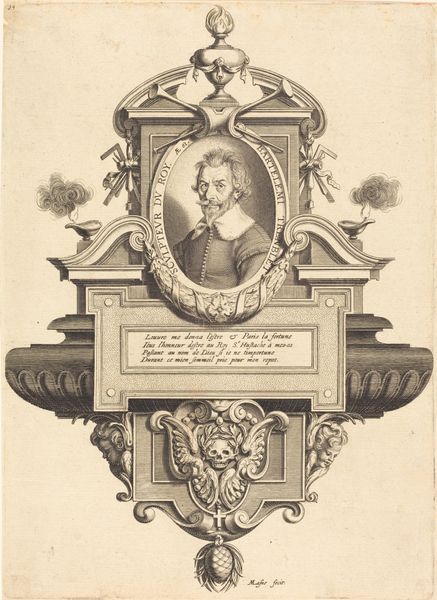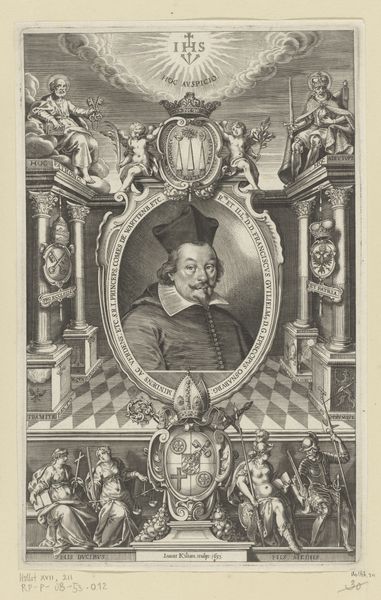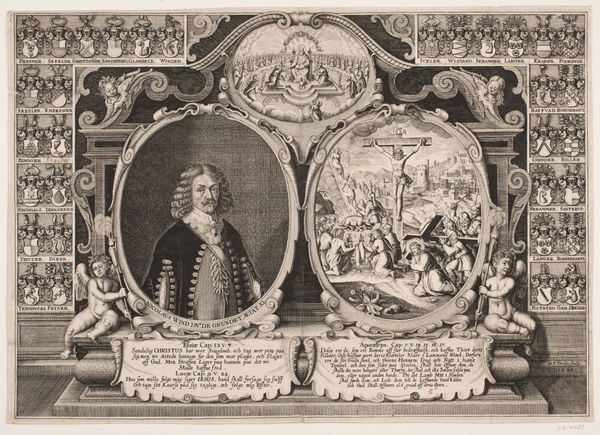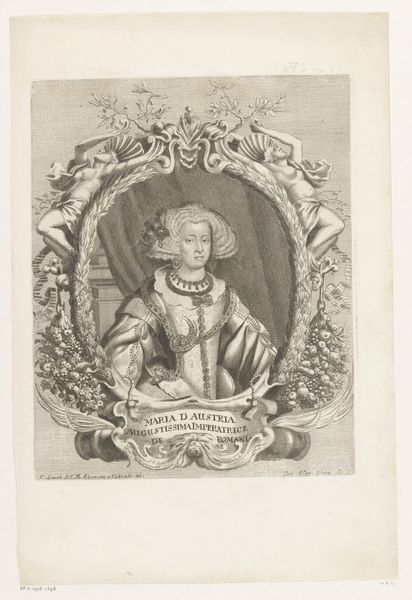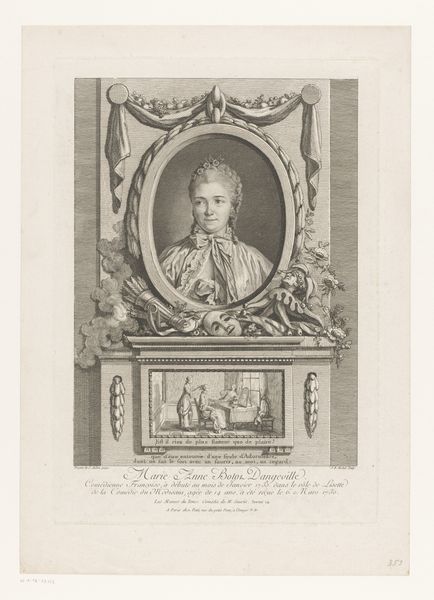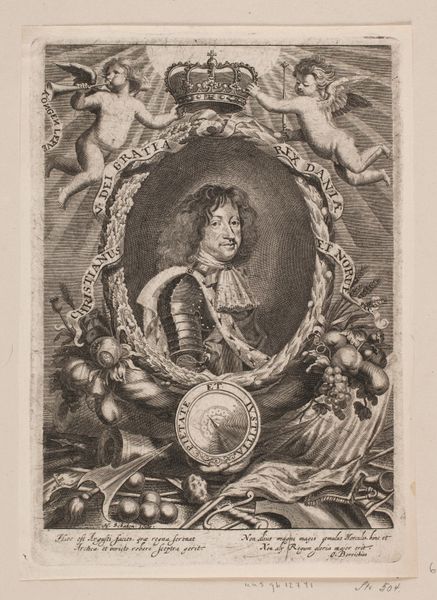
print, engraving
#
portrait
#
baroque
# print
#
history-painting
#
academic-art
#
engraving
Dimensions: height 316 mm, width 243 mm
Copyright: Rijks Museum: Open Domain
Lucas Kilian made this portrait of Frederick V in the early 17th century, using engraving. The image presents us with a visual puzzle of codes and references, all designed to project power and legitimacy. Note the Latin inscriptions framing the central image, typical of the era's elite culture. We see symbols of authority: the coat of arms, military regalia, and allegorical figures representing wisdom and strength. This wasn't just a likeness; it was a carefully constructed projection of Frederick's status as Elector Palatine, one of the Holy Roman Empire's most powerful princes. Consider the social conditions that shaped this image. The early 17th century was a time of intense religious and political conflict in Europe. Frederick V's brief reign as King of Bohemia triggered the Thirty Years' War, a conflict that devastated much of the continent. This portrait reflects the anxieties and aspirations of a ruling class struggling to maintain its authority in a turbulent world. To fully understand this image, we might delve into archival sources, political pamphlets, and theological treatises. By examining the broader social and institutional context, we can gain a richer appreciation of the portrait's significance as a cultural artifact.
Comments
No comments
Be the first to comment and join the conversation on the ultimate creative platform.
